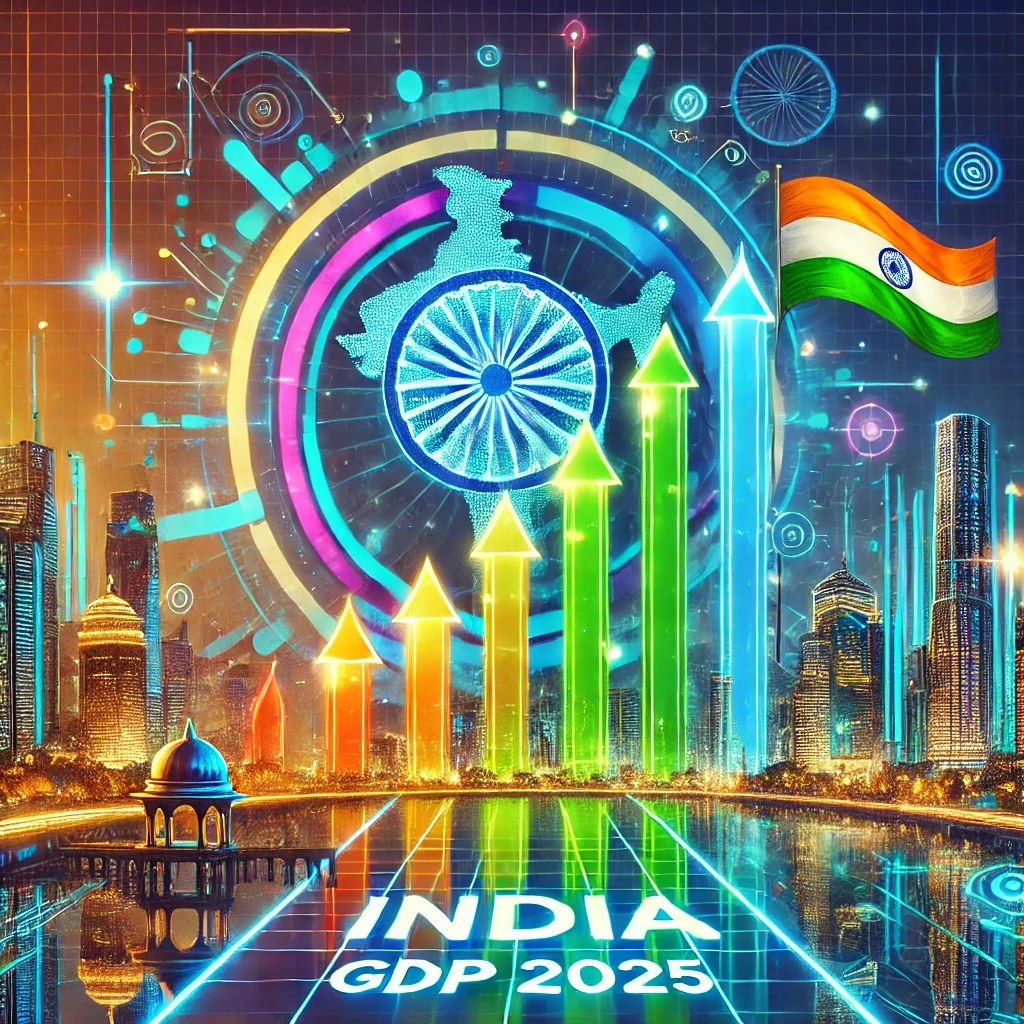India’s GDP at a four-year low of 6.4% in the fiscal year 2025
India’s GDP – India’s economic growth is projected to decrease to 6.4 percent in the fiscal year 2025, marking its lowest level in four years. This decline is attributed to a potential decrease in manufacturing and investment growth, as indicated by preliminary data released on January 7th.
The initial estimates released by the government suggest that growth is likely to fall below the 7 percent threshold for the first time in four years. Dharmakirti Joshi, the chief economist at Crisil, anticipates that India’s gross domestic product (GDP) growth will slow down to 6.4 percent this fiscal year, compared to the robust growth rate of 8.2 percent in the previous fiscal year. This deceleration is a result of a significant slowdown in the second quarter, reduced fiscal stimulus, high interest rates, and stricter lending regulations.

Despite a strong performance in the first quarter of fiscal year 2025, with a growth rate of 6.7 percent, the economy experienced a sharp decline in the second quarter, dropping to a nearly two-year low of 5.4 percent. The average growth rate for the first half of the fiscal year was 6 percent, with expectations of averaging 6.8 percent in the second half.
Recent high-frequency data released last week painted a mixed picture of the economy. While services activity reached a four-month high in December, manufacturing hit a 12-month low. The gross value added numbers suggest that the manufacturing sector is likely to experience a slowdown, with growth expected to decrease to 5.3 percent from 9.9 percent in the previous year.
Similarly, investment growth also disappointed with growth falling to 6.4 percent from 9 percent witnessed in the previous year.
Investment rate, calculated in nominal terms, was at its lowest level of 30.1 percent in three years.
“The decline in GFCF growth to 6.4 percent in FY25 reflects the subdued investment demand in the economy. Government capex which was the lifting factor in revival of investment demand post COVID appears to have tempered off largely due to general elections and focus on fiscal consolidation. While household investments which are mostly in the real estate sector have been steady in FY25, private investment has been muted,” said Paras Jasrai, senior analyst, India Ratings and Research.
On the flip side, consumption is projected to grow at a faster rate of 7.3 percent, compared to 4 percent in the previous year. Agricultural growth is also expected to outperform, with a projected growth rate of 3.8 percent, compared to 1.4 percent in FY24.
The healthy growth in agriculture and the expected moderation in food inflation are likely to boost consumption in the upcoming months. This sustained growth in consumption will also attract private investment, according to Rajani Sinha, Chief Economist at CareEdge.
Positive Momentum
While the initial estimate indicates a lower growth rate than the Reserve Bank of India’s forecast of 6.6 percent in FY25 and the government’s estimate of 6.5-7 percent, economists foresee some upside in the coming months.
The NSO’s projections for H2 FY2025 appear reasonable, but some sectors may report higher growth rates in H2 FY2025. For example, the mining, manufacturing, and THTCS segments are expected to exceed the assumed rates due to the dissipation of the adverse impact of excess rains in Q2 FY2025, an anticipated uptick in rural demand, and favorable base effects in some segments, as stated by Aditi Nayar, Chief Economist at Icra.
The estimated nominal growth rate of 9.7 percent also raises concerns about the fiscal deficit number.
If the government maintains its fiscal deficit target, the fiscal deficit ratio is likely to reach 5 percent of the GDP. However, experts anticipate that the fiscal deficit will remain contained at 4.9 percent due to low capital spending.
Improved Outlook
The outlook for FY26 is more promising, with economists predicting a faster growth rate in the upcoming year, driven by increased consumption.
“We expect real GDP growth to reach 6.7% in FY26. The key factors to monitor will be a more widespread increase in consumption demand, particularly in light of reports of slowing urban consumption. Another critical aspect
However, some experts suggest that geopolitical and climate risks may hinder the growth momentum in the upcoming year.
In our analysis, we anticipate the Indian economy to grow by 6.7% in the next fiscal year in the base-case scenario. This growth will be supported by increased public infrastructure spending, lower crude oil prices, a normal monsoon season, and monetary easing. Despite these positive factors, it is crucial for policymakers to stay alert and proactive in addressing the escalating geopolitical and climate risks, as highlighted by Joshi.
Stay tuned for more updates and insights on the stock market! For more insights on investing in the Indian stock market, check out resource like ET, NSE India.
Disclaimer: This blog post is for informational purposes only and should not be considered financial advice. Investors should conduct thorough research and consult with a qualified financial advisor before making any investment decisions.
